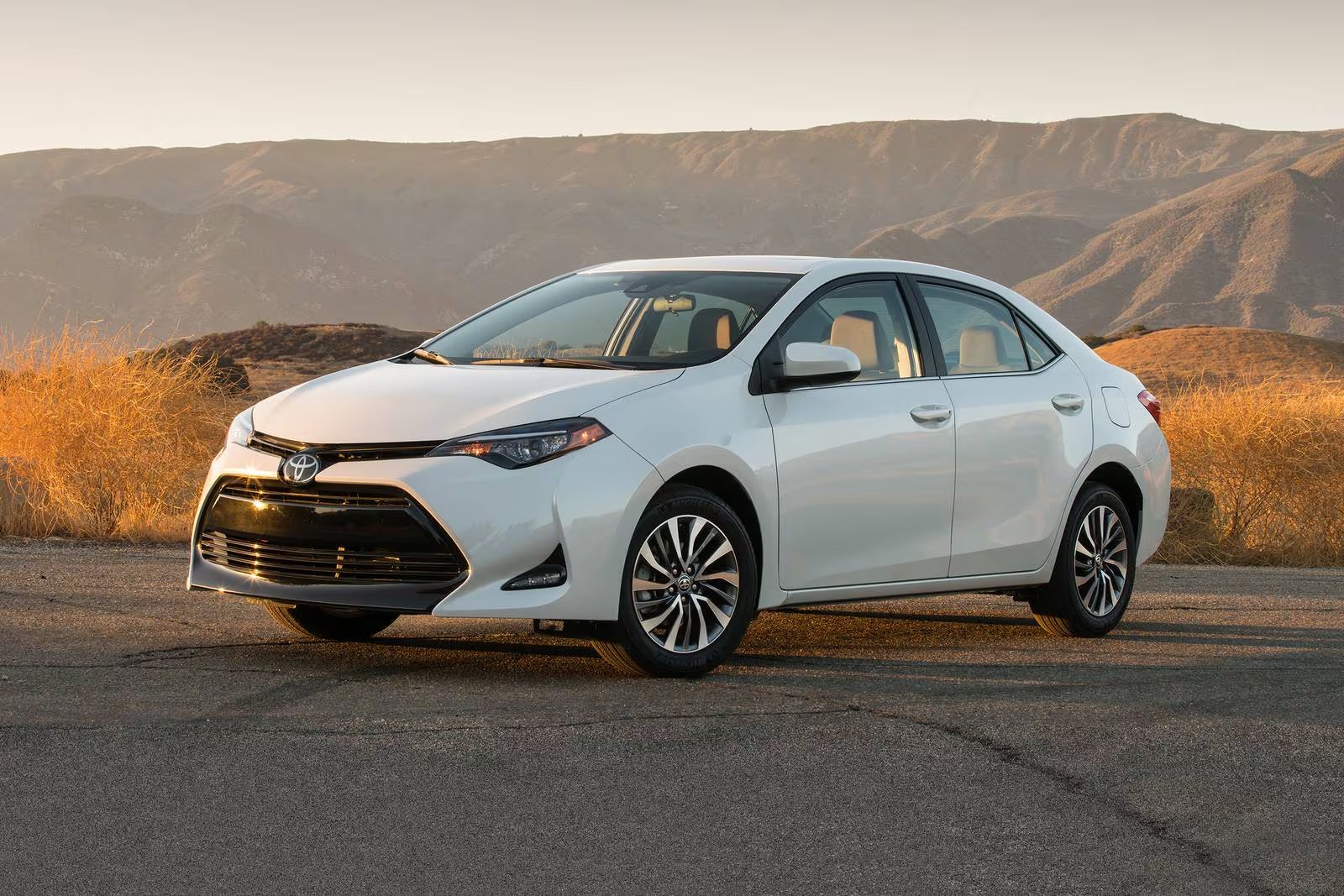When it comes to car ownership, most drivers focus on horsepower, fuel economy, comfort, or technology, but one of the most quietly influential aspects of a vehicle’s long-term cost and performance is tire longevity. Whether you’re cruising in a family-friendly sedan or blasting down the track in a high-powered sports car, your tires are literally where the rubber meets the road.
They affect your ride quality, fuel efficiency, safety, and—if you’re not careful—your wallet. Some cars are surprisingly gentle on their tires, delivering tens of thousands of miles on a single set. Others, especially performance-oriented models, burn through rubber like it’s going out of style.
Tire wear isn’t just about the tires themselves; it’s intrinsically tied to the vehicle they’re mounted on. Factors like weight distribution, drivetrain layout, suspension geometry, power delivery, and driving behavior all influence how quickly a set of tires will wear out.
A sensible sedan driven by a cautious commuter will typically preserve its tires far longer than a muscle car being used to its full potential. Similarly, vehicles designed with a focus on balance and efficiency tend to treat their tires more gently, offering longer lifespans and lower replacement costs.
Understanding tire longevity can help car buyers and owners make smarter decisions—not only about which vehicle to choose, but how to maintain it. Long-lasting tires mean fewer trips to the tire shop, less money spent on replacements, and more time spent enjoying the drive.
For budget-conscious drivers, this can make a significant difference over the life of the car. On the other hand, some performance cars wear their tire consumption like a badge of honor. In these vehicles, rapid tire wear is often a trade-off for jaw-dropping acceleration, incredible grip, and handling that begs to be exploited.
In this article, we’ll examine two very different groups of vehicles: those that make your tires last, and those that devour them with enthusiasm. In the first section, we’ll look at five cars renowned for being tire-friendly.
These models—from family sedans to crossovers—are engineered for durability, ride comfort, and predictable handling. Their design, weight, and purpose all contribute to preserving tire tread over tens of thousands of miles, making them excellent choices for long-term value.
Next, we’ll shift gears to explore five vehicles that are far less forgiving on their tires. These performance monsters—ranging from American muscle to German precision—are engineered for speed, cornering grip, and jaw-dropping torque.
As a result, they demand more from their tires than the average car, often wearing out rubber in a fraction of the time. While this isn’t necessarily a flaw—after all, you don’t buy a Porsche or a Hellcat expecting Toyota-level economy—it’s an important consideration for any driver who wants to understand the full cost of ownership.
Whether you’re an everyday driver looking to keep maintenance costs low or a gearhead willing to trade longevity for adrenaline, understanding how different cars treat their tires is a crucial part of smart vehicle ownership.
Informed drivers can plan their maintenance, select the right tire types, and even modify their driving habits to extend tire life—or embrace the thrill of burning rubber at every green light.
So, buckle up as we dive into the world of tire longevity and tire destruction. Whether you’re saving money or chasing speed, the rubber beneath your wheels has a story to tell—and we’re here to share it.
ALSO READ: 5 SUVs With the Most Headroom and 5 With Tight Ceilings
Cars With Long-Lasting Tires
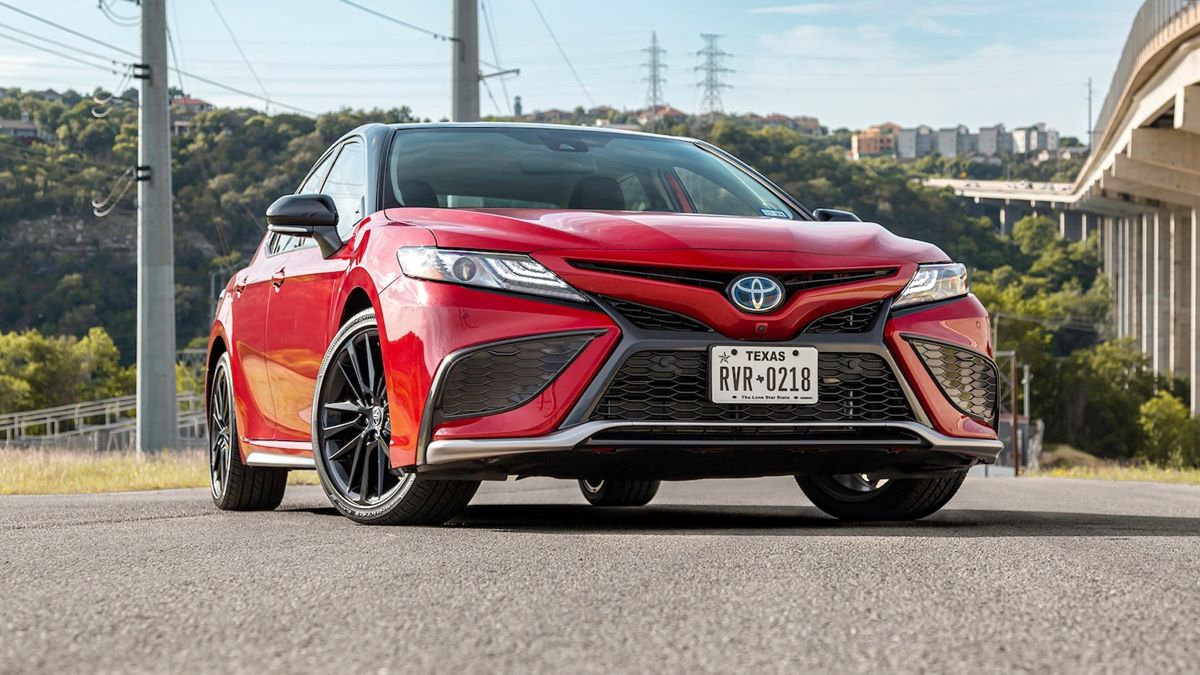
1. Toyota Camry
The Toyota Camry has long held a reputation for being one of the most dependable and low-maintenance sedans on the road, and tire longevity is a key contributor to this perception. Known for its smooth ride and efficient drivetrain, the Camry doesn’t push tires to their limits the way sportier or heavier vehicles often do.
Its moderate horsepower and torque figures mean the tires don’t experience extreme forces under acceleration, cornering, or braking. As a result, they tend to wear more evenly and slowly. This characteristic is ideal for those who want to maximize the lifespan of their tires without sacrificing comfort or safety.
One of the main reasons Camry tires last longer than those on many other vehicles is the type of tire it comes equipped with. Most models are factory-fitted with all-season tires, which are designed with longevity and balanced performance in mind.
These tires are typically made with harder rubber compounds that resist tread wear and can endure varying driving conditions. While they may not provide razor-sharp handling or grip levels seen in high-performance tires, they offer excellent durability over tens of thousands of miles when properly maintained.
Another factor contributing to the Camry’s reputation for preserving tires is the car’s overall design and weight distribution. With a relatively low curb weight and balanced chassis, the Camry minimizes the stress placed on each tire, especially during turns or over uneven pavement.
The suspension is tuned for comfort rather than aggression, ensuring that the tires roll smoothly and don’t scrub excessively during everyday driving. This kind of engineering is particularly effective in reducing irregular wear, one of the most common reasons for premature tire replacement.
Driving behavior plays a significant role in tire wear, and the Camry tends to attract more conservative drivers who use the car for daily commuting, family trips, and errands.
These driving habits naturally align with gentle acceleration, smooth braking, and minimal high-speed cornering—actions that directly extend tire life. Even when Camrys are driven in harsher climates or rougher road conditions, proper alignment and consistent tire care (like rotations and pressure checks) allow the tires to last significantly longer than average.
Finally, from an ownership perspective, the Camry presents an economical long-term value proposition when it comes to tire replacement. Tire prices for the Camry are generally affordable due to their common sizes, and because tire changes are needed less frequently, the total cost of ownership remains low.
This advantage is particularly evident for high-mileage drivers and fleets, where tire replacement can quickly add up. In short, the Camry is a tire-friendly vehicle in almost every sense: light on its rubber, easy on the wallet, and ideal for the everyday driver.
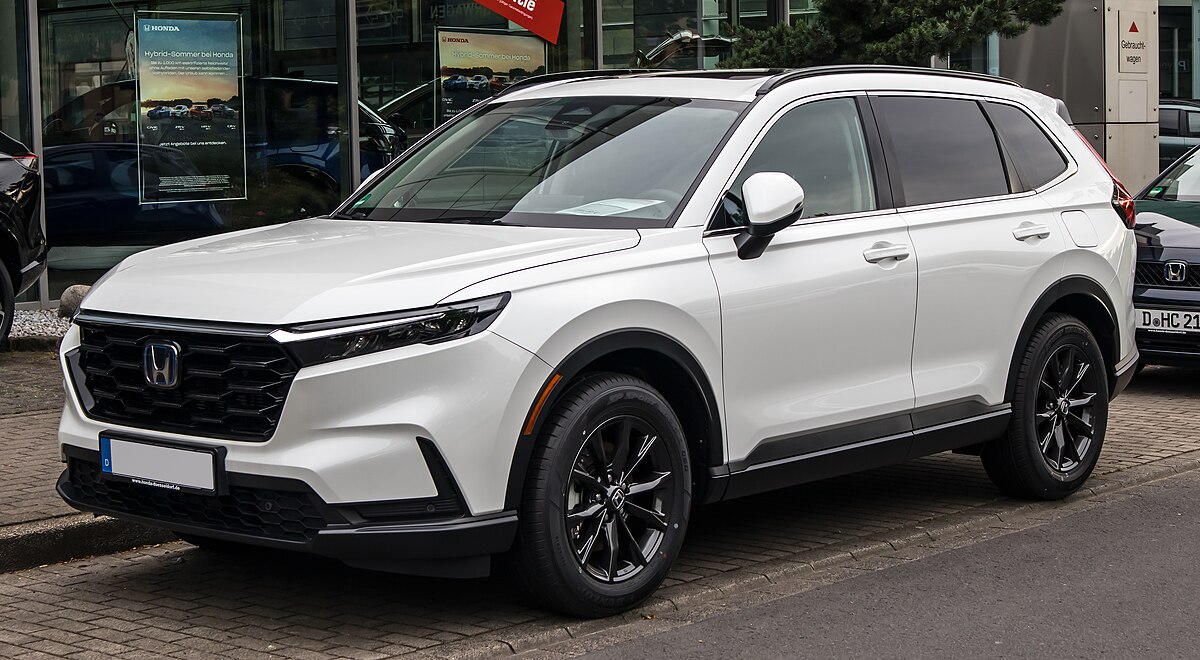
2. Honda CR-V
The Honda CR-V is one of the most trusted and best-selling compact SUVs in the world, and one of the most overlooked aspects of its practicality is its ability to preserve tire life. The CR-V strikes an admirable balance between utility and comfort, and its engineering promotes consistent tire performance over tens of thousands of miles.
Thanks to its light-to-moderate weight and non-aggressive drivetrain, it avoids the conditions that typically lead to premature tire wear. For many drivers, the CR-V is an excellent example of a vehicle that offers both long-term dependability and low operating costs, particularly when it comes to tires.
From the factory, the CR-V typically comes equipped with touring or all-season tires that are engineered for tread life rather than performance. These tires are often built with symmetrical tread patterns and sturdy sidewalls, designed to endure mixed driving conditions while maintaining even wear.
Unlike off-road or sport tires, which use softer rubber and can degrade quickly, CR-V tires focus on long-term reliability. This is ideal for suburban families, commuters, and retirees who prefer peace of mind over track-day grip levels.
The vehicle’s design plays an essential role in how gently it treats its tires. The CR-V uses a well-balanced, front-wheel-drive or all-wheel-drive layout, depending on the trim, both of which are designed for predictable and stable handling.
The suspension is soft enough to absorb shocks from potholes and uneven pavement, yet firm enough to prevent excessive body roll. This careful tuning ensures tires remain evenly loaded during cornering and braking, helping to avoid the scalloping and shoulder wear that plague more aggressive chassis setups.
Driving style is another reason CR-V owners get extended mileage from their tires. Most CR-Vs are driven conservatively—rarely pushed hard through corners or subjected to fast acceleration.
This light-footed driving is perfect for all-season tire longevity, as tires are subjected to less heat buildup, friction, and lateral forces. In fact, many CR-V owners report reaching over 60,000 miles on a single set of tires with proper rotation and alignment, a remarkable benchmark for an SUV in its class.
Moreover, maintenance accessibility is a key feature that enhances tire life. The CR-V’s tire sizes are standard and widely available, meaning drivers can choose from a variety of durable and affordable brands.
Plus, because tire wear is consistent and gradual, drivers typically experience fewer issues like sidewall bulges, alignment irregularities, or cupping. Altogether, the CR-V is one of the most tire-friendly SUVs on the market, with a reputation for wearing rubber slowly, evenly, and economically.
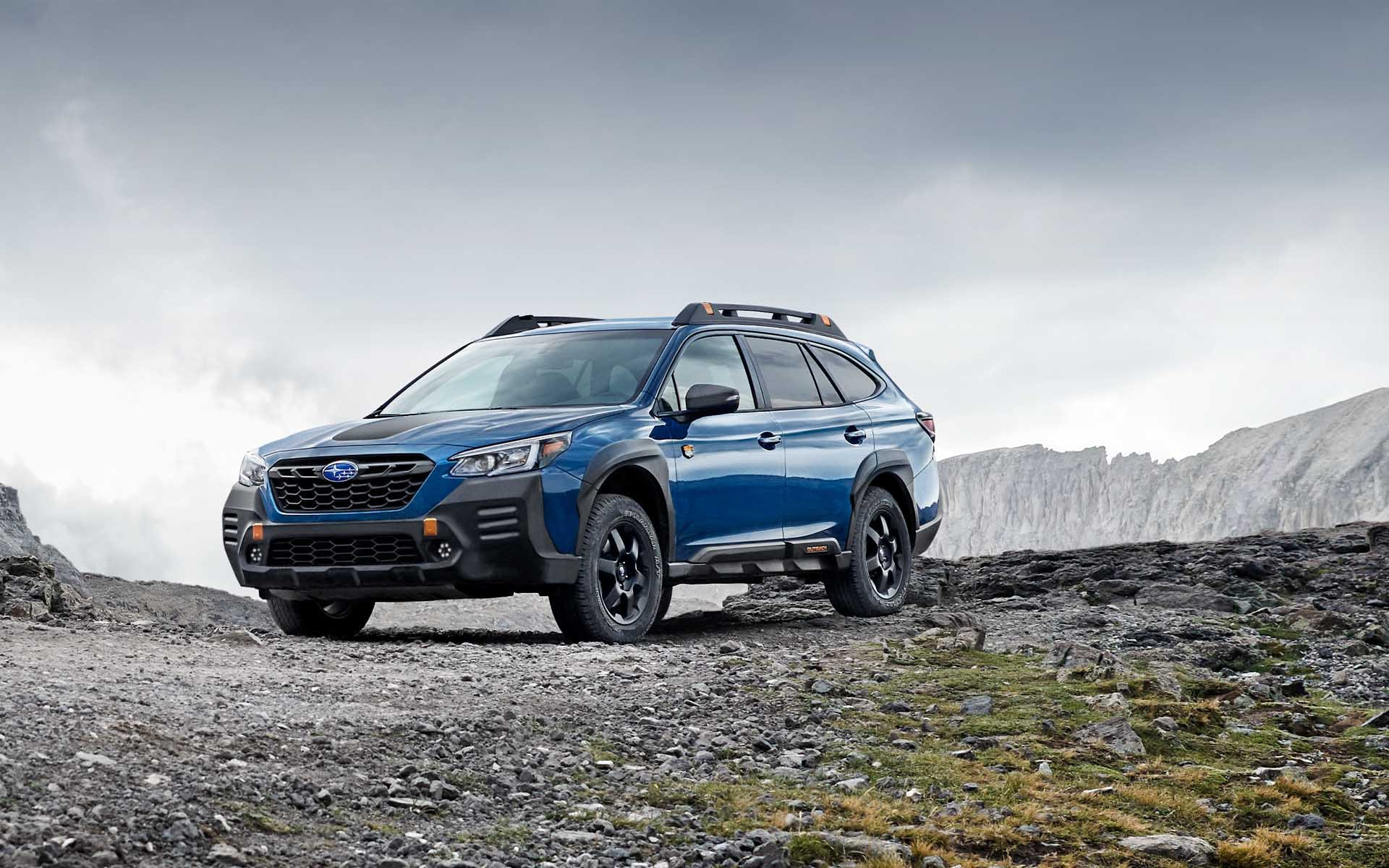
3. Subaru Outback
The Subaru Outback is a unique player in the crossover segment, combining the toughness of an SUV with the driveability of a car. This blend of characteristics translates to a surprising benefit: long-lasting tires. With its symmetrical all-wheel-drive system and practical engineering focus, the Outback offers tire longevity that rivals many sedans and outperforms other AWD vehicles.
Its well-distributed torque output across all four wheels ensures that tires wear at a more even rate, reducing the tendency for premature bald spots or excessive edge wear common in front- or rear-wheel-drive vehicles.
Subaru engineers the Outback for real-world conditions: snow, rain, gravel, and long highway trips. As a result, the tires are designed to be versatile and resilient. Outbacks typically come equipped with either all-season or light all-terrain tires, both of which have tread patterns and compounds geared toward endurance.
These tire types often come with mileage warranties up to 70,000 miles, a testament to their potential for long service life. For those who stick to paved roads, the all-season options offer an especially smooth and long-lasting ride.
Despite its outdoorsy branding, the Outback is rarely pushed in ways that would destroy tires quickly. Most owners use it as a family car or commuter with occasional light off-road use.
When off-roading is involved, it tends to be light-duty trails, which the tires are designed to handle. There’s less spinning, sliding, or torque-loading than you’d see in hardcore off-road vehicles, meaning the tread stays intact for longer periods. Combined with the Outback’s soft ride and moderate curb weight, the wear on the tires is usually slow and evenly distributed.
The car’s ground clearance, one of the highest in its class, allows it to traverse poor roads without needing to attack them aggressively. This saves the tires from hard jolts, scuffs, and excessive flexing.
Furthermore, the Outback’s driver aids—traction control, hill descent control, and symmetrical AWD—work to reduce tire slippage, extending tread life. When tires grip instead of spin, they last significantly longer.
Lastly, Subaru drivers tend to be highly maintenance-conscious. Routine alignments, proper tire inflation, and regular rotations are commonly followed, extending tire life even further.
The Outback community often shares best practices on maximizing tire longevity, making this one of the most tire-conscious owner bases out there. Between its careful engineering and attentive user base, the Subaru Outback is a clear choice for those who want maximum mileage out of every set of tires.
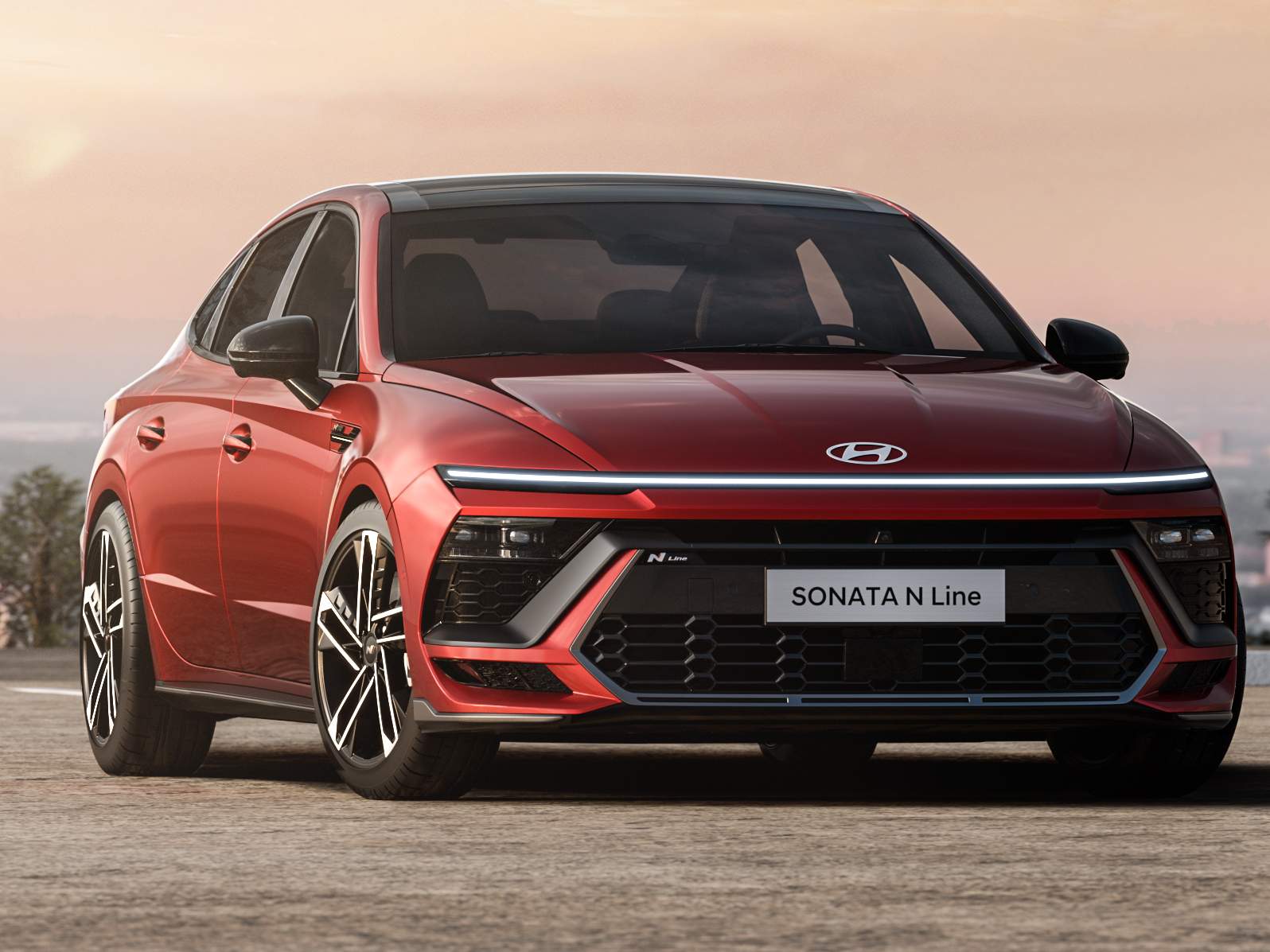
4. Hyundai Sonata
The Hyundai Sonata may not be the flashiest midsize sedan on the market, but it is undoubtedly one of the most efficient and cost-effective when it comes to tire usage.
Known for its quiet ride, balanced handling, and impressive feature set for the price, the Sonata’s approach to road dynamics makes it gentle on tires. Its suspension is tuned for comfort, not aggression, and the overall body structure promotes minimal body roll and precise, low-impact cornering—conditions under which tires wear gradually and consistently.
Sonatas usually come fitted with all-season tires, optimized for durability and all-weather performance. These tires are harder in composition than sport tires, meaning they resist tread wear for longer.
Although they may not provide the thrilling grip levels associated with high-performance rubber, they offer outstanding longevity, especially in urban and suburban driving conditions. This is perfect for Sonata owners, who typically prioritize reliability and operating cost over aggressive performance.
The vehicle’s weight and power also play significant roles in tire longevity. The Sonata isn’t overly heavy, and its engines—ranging from fuel-efficient four-cylinders to modest turbocharged options—are not excessively powerful.
This combination means that the tires aren’t subjected to extreme torque or heat, which are primary contributors to fast tread wear. In fact, unless you’re a particularly aggressive driver, it’s entirely possible to get 60,000 or more miles out of a quality set of tires on the Sonata.
Hyundai has also invested heavily in improving steering and alignment accuracy, two factors that can significantly affect tire life. With better suspension geometry and tighter quality control over camber and toe angles, newer Sonata models are much less prone to uneven wear compared to older generations. As a result, drivers who maintain alignment and rotate their tires regularly experience highly predictable and long-lasting tread life.
Finally, it’s worth noting the value proposition the Sonata offers in the tire department. Because it uses common tire sizes and avoids specialty performance or run-flat tires, replacements are affordable and widely available.
Owners aren’t forced into high-cost brands or rare tire models, and this flexibility further enhances the Sonata’s reputation as a tire-friendly sedan that delivers value long after the initial purchase.
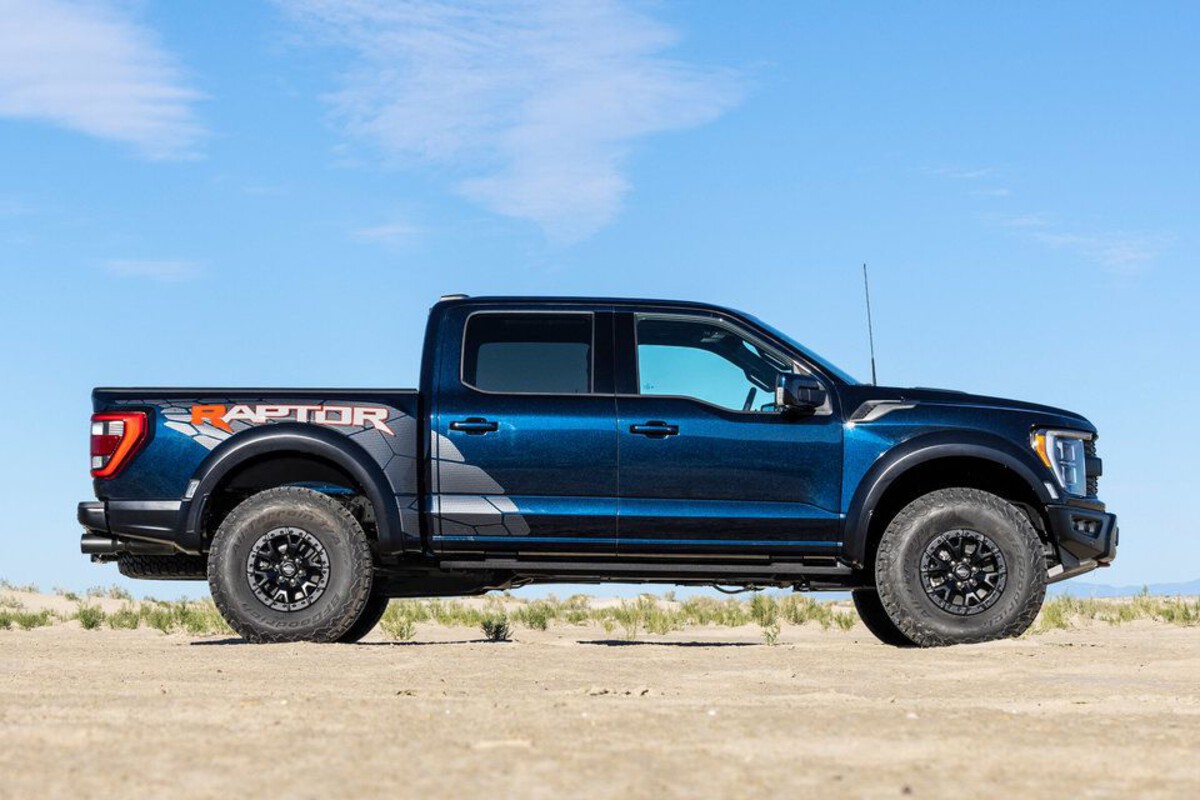
5. Ford F-150 (with standard tires)
When people think of pickup trucks, tire longevity may not be the first benefit that comes to mind—but in the case of the Ford F-150, it should be.
Especially when equipped with standard highway or touring tires, the F-150 offers surprising tire durability given its size and weight. Designed with versatility in mind, the F-150 distributes its weight across a broad footprint, minimizing localized pressure and allowing for more even wear patterns over the life of the tire.
The F-150’s chassis and suspension systems are built for rugged use, yet they behave gently during typical driving conditions. Whether it’s a daily commute, highway cruise, or light-duty towing, the suspension absorbs much of the stress that might otherwise be transferred to the tires.
Its shocks, springs, and load distribution systems help prevent tire scrubbing and scalloping, issues that commonly shorten tire life in performance or poorly balanced vehicles. Another key reason the F-150 preserves tires is its gearing and throttle mapping, which are tuned for steady power delivery.
While the truck offers robust torque for hauling and towing, it doesn’t deliver that power abruptly, meaning the tires aren’t subjected to harsh breakaway moments or violent acceleration forces unless provoked. This smooth behavior goes a long way toward preventing uneven tread loss or premature shoulder wear.
Owners who use their trucks for personal transport rather than heavy-duty commercial work will find that their tire wear is particularly slow. Many F-150s are used as family haulers or long-distance cruisers, which means fewer sharp turns, hard stops, or payload-induced stress on the tires.
Highway tires with hard compounds can easily exceed 50,000 miles on these vehicles with proper care, especially when drivers keep up with alignments, tire balancing, and inflation checks.
Moreover, the aftermarket tire market for the F-150 is one of the largest in the automotive world. This means not only a wide selection of long-lasting options but also better pricing due to high competition among tire brands.
Whether you’re replacing with OEM or choosing high-mileage aftermarket rubber, the F-150 lets you stretch your tire budget further than you might expect for a vehicle of its size and strength.
5 Cars That Burn Rubber Fast
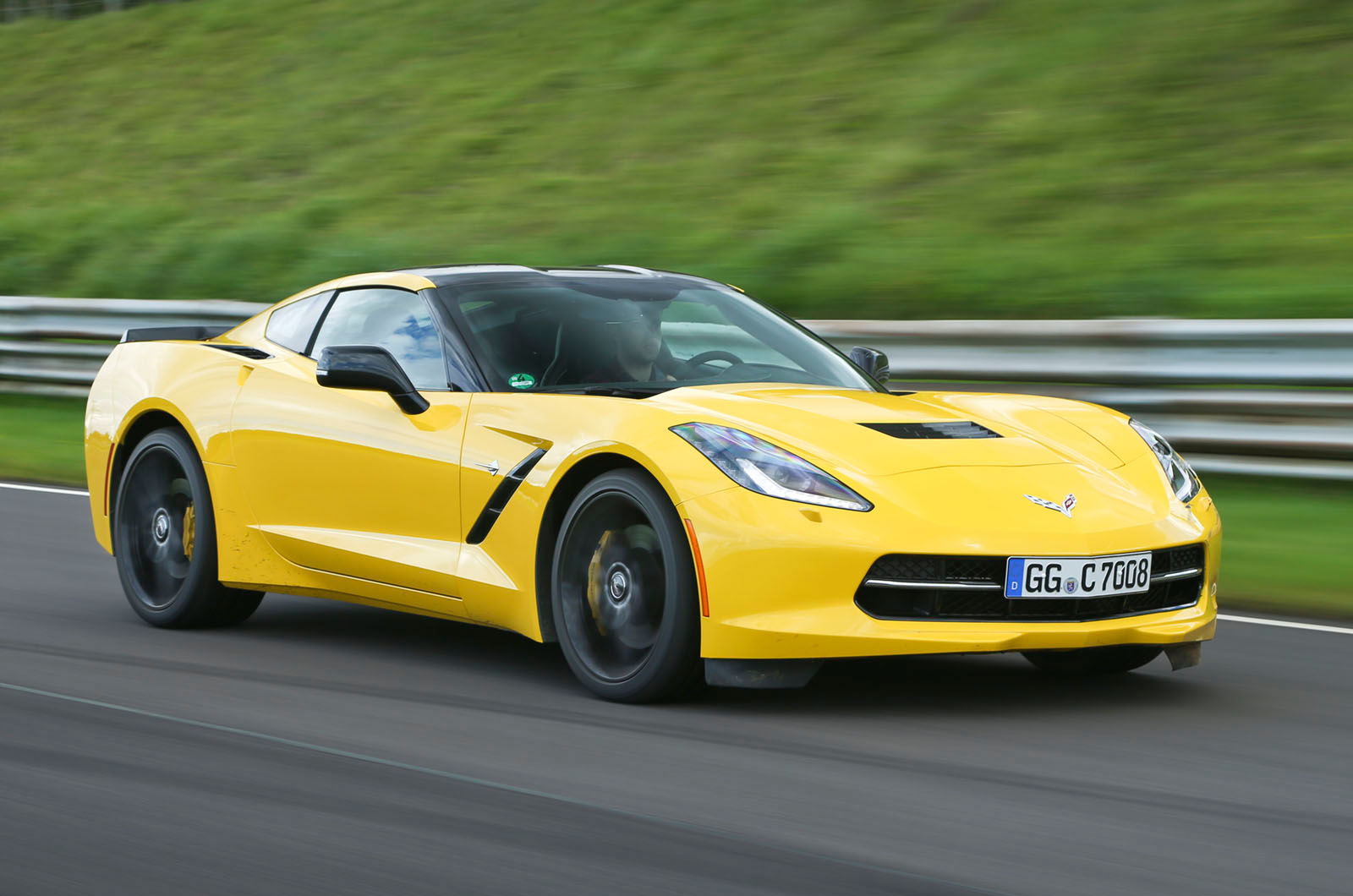
1. Chevrolet Corvette
The Chevrolet Corvette is an icon in the American sports car world, and with that legendary status comes incredible power, speed, and tire consumption. Designed for thrilling performance, the Corvette pushes its tires to the limit every time you step on the accelerator.
Whether it’s the front-engine C7 or the mid-engine C8, these machines boast incredible torque and horsepower that put an immense strain on the tires during takeoff, acceleration, and high-speed cornering. The rear tires, in particular, tend to suffer the most wear because of the car’s rear-wheel-drive layout and aggressive throttle response.
The Corvette typically comes equipped with ultra-high-performance summer tires designed for maximum grip and handling. These tires use soft rubber compounds that provide excellent road adhesion but wear down very quickly. They’re not built for longevity—they’re built for performance.
On dry roads and racetracks, they offer cornering precision and braking capabilities that enhance the driving experience. But their grip comes at a steep cost: many owners report needing replacements in as little as 10,000 to 12,000 miles, and even sooner under aggressive driving conditions.
What exacerbates tire wear in the Corvette is the driving behavior it encourages. Most people don’t buy a Corvette to drive like they would a Camry. Corvette owners often enjoy hard launches, spirited backroad drives, and even occasional track days, all of which significantly increase tire wear.
The powerful launch control and traction systems still allow for a bit of tire slip under heavy throttle, which heats up the tires and breaks down rubber compounds faster than regular driving.
The width of the tires is also a contributing factor. The Corvette’s wide stance and staggered wheel setup (wider rear tires) distribute more power and grip to the rear axle, but this means there’s more surface area in contact with the road—more grip, but also more friction and faster tread wear.
Because the tires are so specific in size and performance classification, replacements are often expensive and require specialized installation and balancing to preserve the car’s handling characteristics.
For owners, tire replacement becomes a routine part of the Corvette experience. While this is seen as a trade-off for world-class performance and track-ready capabilities, it’s something every buyer should factor into their budget.
Between high tire costs, frequent changes, and limited durability, the Corvette is one of the quickest tire-consuming cars in its class—but that’s the price of fun when you own a true American performance legend.

2. Porsche 911
The Porsche 911 is one of the most revered sports cars in automotive history, admired for its precision engineering, balance, and unmistakable driving dynamics.
But as with all high-performance vehicles, those sharp handling capabilities and astonishing acceleration come with a downside: the 911 burns through tires at an alarming rate. Particularly in models like the Carrera S, Turbo, or GT3, the tires are the vehicle’s direct link to the road—and they take a beating every time you drive.
The 911 typically comes with very high-performance summer tires from brands like Michelin or Pirelli, which are made with soft, sticky compounds optimized for grip rather than longevity.
These tires are engineered to deliver maximum traction under hard cornering, fast acceleration, and sudden braking, but they degrade rapidly when subjected to heat and aggressive use. On spirited drives, they wear unevenly and quickly, especially the rears, which bear the brunt of the car’s rear-engine layout and torque delivery.
What makes the 911 particularly hard on tires is its dynamic weight distribution. The engine sits over the rear axle, placing extra stress on the rear tires during acceleration and even cornering.
While Porsche has refined its suspension and handling systems to manage this unique layout, physics still dictate that the rear tires carry a larger load and wear faster. Under spirited driving, this wear accelerates drastically. Many 911 drivers find themselves replacing rear tires after just 8,000 to 10,000 miles.
The Porsche 911 also tends to attract drivers who make full use of its capabilities. These are not passive commuters but driving enthusiasts who regularly push their cars on winding roads, track days, or even autocross events.
The tire replacement cycle becomes more frequent for those who truly explore the car’s limits. Even if used solely for road use, quick lane changes, rapid acceleration, and tight cornering will still take their toll on the tires.
Moreover, the cost of tire replacement on a Porsche 911 is not trivial. Porsche-approved tires are often expensive due to their size, brand, and performance category.
Many models use staggered fitments with ultra-wide rear tires and special Porsche markings (N-rated), which further limits your choices and increases prices. In exchange, you get a driving experience that’s hard to match—but it comes with a rubber tax that 911 owners come to expect.
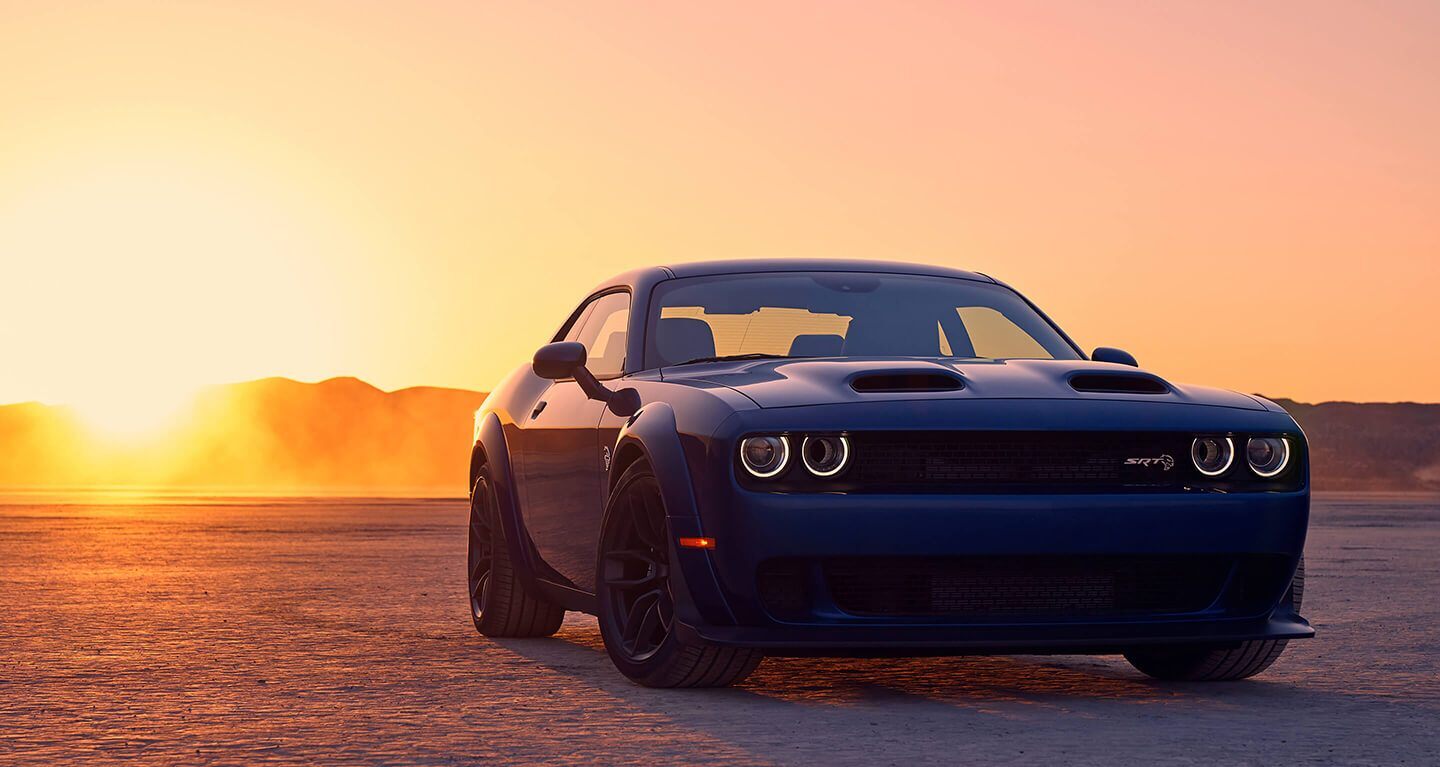
3. Dodge Challenger Hellcat
The Dodge Challenger Hellcat is a tire’s worst nightmare—and proudly so. With over 700 horsepower and 650 lb-ft of torque sent to the rear wheels, the Hellcat is designed to shred pavement and roast tires in a glorious display of American muscle.
While this provides unparalleled thrills and an intoxicating driving experience, it’s no surprise that the Hellcat has one of the worst reputations for tire longevity among production vehicles.
One of the biggest reasons the Hellcat burns through tires so quickly is its insane torque curve. Even under light throttle, the car has a tendency to break traction, especially in lower gears.
It doesn’t help that the rear tires are constantly trying to manage power delivery that’s better suited for a drag strip than a city street. This means even casual driving can result in premature wear, and enthusiastic driving will cut tire life down to just a few thousand miles.
The Hellcat is also notorious for encouraging aggressive behavior. Equipped with launch control, line-lock, and performance pages, the car practically invites you to do burnouts, quarter-mile pulls, and stoplight launches.
While this is part of the fun, it’s also murder on the tires. Many owners go through sets of rear tires within 5,000 to 8,000 miles if they regularly engage in spirited driving or drag racing events.
Tire wear is further complicated by the Hellcat’s sheer weight. At over 4,400 pounds, the Challenger isn’t light on its feet, and all that mass puts additional pressure on the tires during hard cornering and braking.
Even though the front tires don’t see as much power, they can still wear quickly due to the car’s understeer characteristics and large contact patches needed to balance the car’s heft.
Finally, replacing tires on a Hellcat isn’t cheap. It uses wide, high-performance tires, often 275mm or wider, and many owners upgrade to even wider tires in the aftermarket to get better traction.
These tires are expensive and wear down quickly, which makes tire budgeting a critical part of Hellcat ownership. It’s a car that delivers joy by the foot—but chews up tires inch by inch in the process.
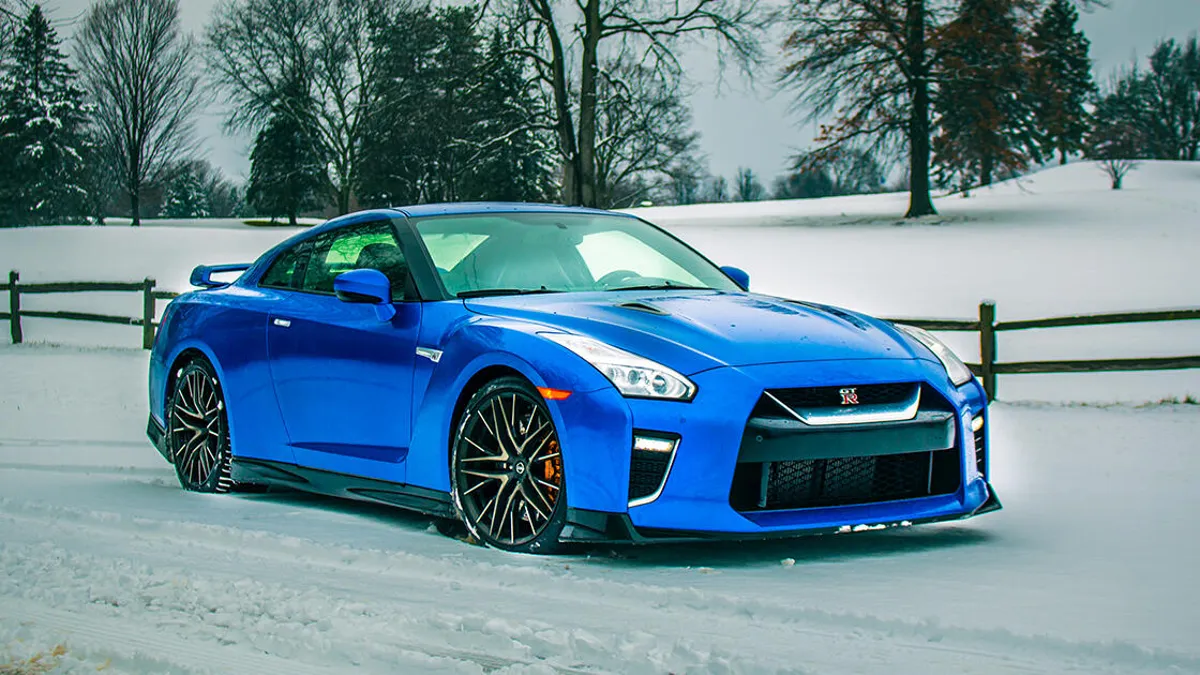
4. Nissan GT-R
The Nissan GT-R, also known as “Godzilla,” is a technological tour de force that combines brutal acceleration with razor-sharp handling. It’s also infamous for how quickly it devours its tires.
The GT-R’s complex all-wheel-drive system provides excellent traction, but that doesn’t mean the tires last long. In fact, because of its high grip levels and aggressive driving dynamics, the GT-R places immense stress on all four tires, often requiring replacement far more frequently than regular cars.
One of the main reasons the GT-R wears out tires so quickly is its use of high-grip, high-performance summer tires. These tires are specially designed for speed, stability, and cornering precision, with compounds that prioritize grip over durability.
As a result, they’re extremely vulnerable to rapid wear, particularly when the car is driven hard. And because the GT-R handles so well, drivers are often tempted to push the car to its limits, contributing even more to rapid tire degradation.
Another major factor is the GT-R’s immense power output. Producing anywhere from 480 to over 600 horsepower (depending on the model year and trim), the GT-R launches like a rocket.
The torque split system that sends power to both axles can still overwhelm the tires during hard launches and high-speed maneuvers. Despite having four driven wheels, the GT-R’s tires still struggle under the strain of transferring all that force to the pavement, particularly the rear tires, which tend to degrade faster due to power distribution bias.
The GT-R is also a heavy car, weighing around 3,900 pounds. That weight, combined with stiff suspension tuning and high-speed capability, means the tires are always under load.
Even when not driving aggressively, tire sidewalls and tread patterns wear down due to the constant stress. On top of that, aggressive camber and toe settings used to enhance track performance can accelerate edge and shoulder wear, making alignments crucial to tire life.
Owners of the GT-R often face high replacement costs because the car uses staggered, performance-specific tire sizes. OEM-spec tires are expensive and sometimes hard to find due to their unique fitment.
Many owners choose to rotate the tires more frequently and carefully monitor tire pressure to extend life, but even with meticulous care, it’s difficult to get more than 15,000 miles out of a set. For enthusiasts, it’s the price of playing with one of the fastest street-legal cars in the world.

5. BMW M3 (F80 Generation)
The BMW M3 has long been considered the gold standard of performance sedans, and the F80 generation—produced from 2014 to 2018—raised the bar with a twin-turbocharged inline-six engine that delivered immense power and razor-sharp responsiveness.
However, with this jump in performance came a clear trade-off: tire wear. The F80 M3 is one of the most tire-hungry BMWs ever made, especially when driven the way it was intended.
The M3 is designed to be driven hard. With over 400 horsepower and aggressive throttle mapping, the F80 makes it all too easy to overpower the rear wheels. Even with sophisticated traction control systems, spirited driving quickly results in spinning, sliding, and hard cornering—all of which accelerate tire wear.
The car’s rear-biased power delivery means the rear tires take a disproportionate amount of abuse, and even careful drivers may see them wear down rapidly compared to the fronts.
A major contributor to tire wear is the M3’s suspension setup. Tuned for precision and sharp handling, it uses stiff dampers, aggressive alignment settings, and minimal body roll.
While this results in fantastic road feel and cornering capability, it also places constant lateral stress on the tires. The sharp camber angles enhance grip at speed but cause uneven tread wear over time, especially on the inner edges of the tires.
Moreover, many M3s are driven in environments that promote tire abuse. Whether it’s canyon carving, track days, or just spirited commuting, owners of the F80 generation often push their cars harder than those of more conservative luxury sedans.
Even brief moments of aggressive driving—like quick corner exits or hard braking—can significantly reduce tire lifespan. It’s common for rear tires to last under 10,000 miles for drivers who regularly enjoy the car’s performance.
Replacing tires on the M3 can also be expensive. It uses wide, low-profile tires that are often only available in premium, performance-focused variants.
Many models use 19- or 20-inch wheels, limiting options and increasing replacement costs. Combined with the short lifespan, tire replacement becomes a recurring expense for M3 owners—but for many, the thrill of driving the car far outweighs the cost of keeping it shod in fresh rubber.
ALSO READ: 5 Pickups With the Cheapest Registration Renewal and 5 Priciest Tags
Tires may not be the most glamorous part of your car, but they are one of the most vital—and often, one of the most expensive to maintain. As we’ve seen, tire longevity varies widely between different types of vehicles, and understanding how your car interacts with its tires is essential for both budget-conscious drivers and high-performance enthusiasts.
Whether you prioritize economy or excitement, the way your car treats its tires has a major impact on the driving experience, long-term costs, and even safety on the road.
The five cars we explored in the long-lasting category—like the Toyota Camry, Honda CR-V, and Subaru Outback—illustrate how thoughtful engineering, balanced weight distribution, and moderate power output can dramatically extend the life of your tires.
These vehicles are designed with durability and efficiency in mind, and they don’t place unnecessary stress on their tires. They come with tire types intended for long service life, and their typical owners tend to drive conservatively, which further extends tread wear. For those looking to maximize value and minimize time at the tire shop, these models are smart, reliable options that reward responsible ownership.
On the flip side, performance vehicles like the Dodge Challenger Hellcat, Porsche 911, and Nissan GT-R show the opposite end of the spectrum. These cars are engineered for thrill-seeking, high-speed, high-grip driving—and their tires pay the price.
Equipped with ultra-soft, high-performance rubber, these cars chew through tread with each aggressive corner, launch, or track session.
For enthusiasts, that’s simply the cost of entry. In return, you get jaw-dropping performance and unforgettable driving dynamics. Still, it’s worth remembering that the thrill of driving a 700-horsepower beast doesn’t come cheap when it’s time to buy a new set of rear tires every few thousand miles.
This comparison isn’t meant to declare one type of vehicle better than another. Rather, it’s about awareness and understanding. Knowing how a specific car impacts tire life helps owners plan better, maintain their vehicles more effectively, and avoid unpleasant surprises when those treads start to vanish.
If you’re buying a new vehicle, it’s helpful to think beyond the sticker price and consider the long-term maintenance factors—tire replacement being a big one. Similarly, if you’re modifying your car for performance, upgrading the tires might not just be about grip—it might also mean budgeting for replacements more often.
Even within each category, driver behavior and maintenance practices make a big difference. Rotating tires regularly, checking tire pressure, maintaining proper alignment, and avoiding aggressive driving can significantly extend tire life, even on cars that are known for burning rubber.
On the other hand, aggressive driving habits, neglecting rotations, or poor alignment can drastically shorten the life of even the most durable tires. In the end, it’s a two-way street between car and driver.
Ultimately, your tires are a reflection of how your car was designed—and how you choose to drive it. Whether you own a sensible commuter or a tire-slaying performance monster, being informed about tire behavior allows you to drive smarter, safer, and more economically.
The cars that make tires last and the ones that wear them out both have their place in the automotive world. What matters most is knowing what you’re getting into—and driving with intention.

